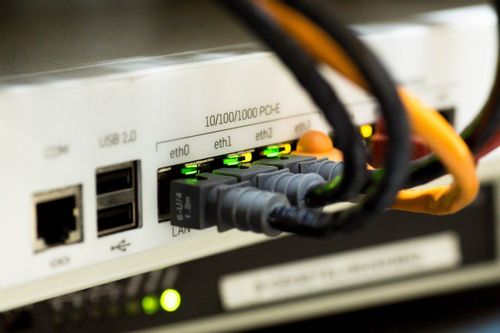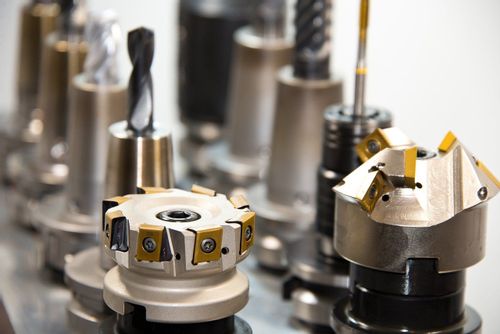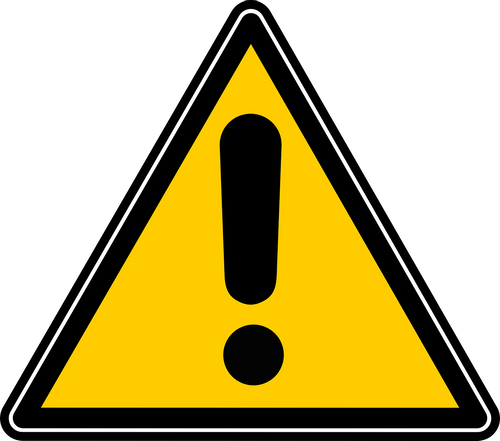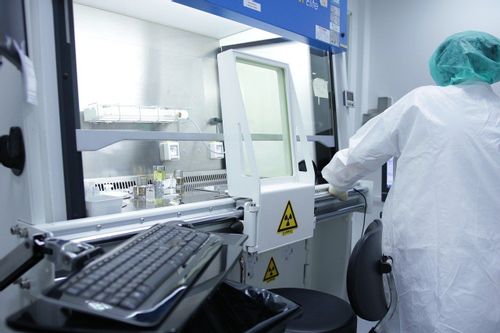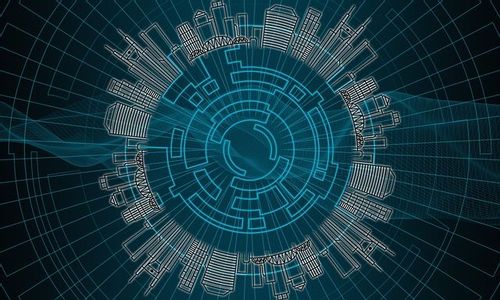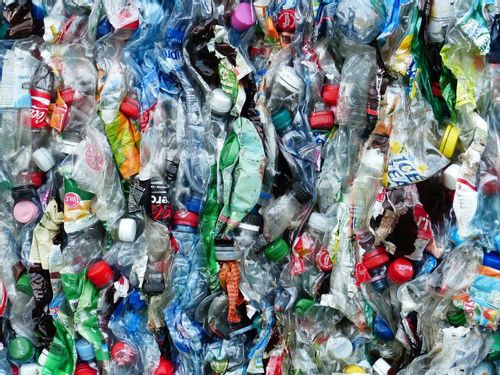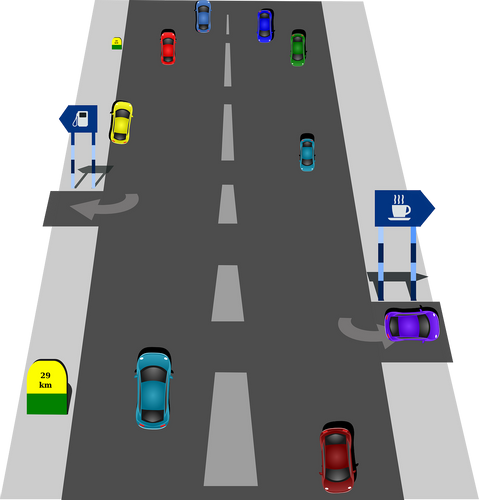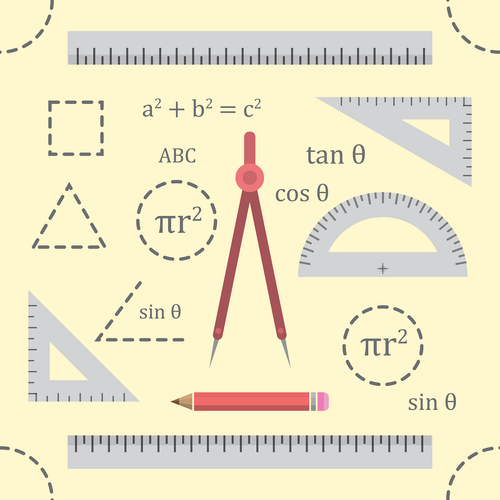Standards Packages
iTeh together with SIST has developed and compiled a comprehensive collection of standard packages to support your standard requirements. Our packages cover an array of content that includes quality management, risk management, road vehicles, machine safety, and much more. With over 200 packages to choose from, you are sure to find a collection to suit your standard needs.
Latest Standards
This document provides information on how electrical designers determine the allowable limit of electric wire in space condition. This document provides the basis of the allowable wire current and its derated value in published technical standards. This document also provides the results of comparing the derated wire current values depending on the number of bundled wires, wire type and temperature environments, which can help the system designer to handle the difference when determining the limit of wire ampacity.
- Technical report11 pagesEnglish languagesale 15% off
This document specifies two test methods for the determination of water absorption resistance of rubber– or plastics-coated fabrics: — Method A: Using red ink, which is applied to coated fabric where water absorption phenomenon can be visually observed; — Method B: Using a water detection test paper.
- Standard15 pagesEnglish languagesale 15% off
This document specifies two methods for determination of the total moisture of brown coals and lignites using an indirect gravimetric single-stage method and a two-stage method.
- Standard8 pagesEnglish languagesale 15% off
This document provides guidance and requirements for the maintenance and the use of triaryl phosphate esters as fire-resistant fluids for turbine control, other hydraulic systems in power generation and fire-resistant turbine fluids. This document is applicable to fluids under the HFDR category defined in ISO 6743-4 and under the TCD, TSD and TGD categories defined in ISO 6743-5.
- Standard22 pagesEnglish languagesale 15% off
- Standard24 pagesFrench languagesale 15% off
This document establishes requirements and recommendations for the design format and data content of a drone or UAS remote pilot and remote crew licence, encompassing both visual human-readable features and machine-readable technologies. By establishing a common basis, this document aims to standardize drone or UAS remote pilot and remote crew licence without impeding the efforts of individual national or regional drone or UAS-related authorities. NOTE Not all jurisdictions require drone or UAS remote pilot and remote crew licences.
- Standard35 pagesEnglish languagesale 15% off
This document specifies requirements for five types of compact, wire-braid-reinforced hoses and hose assemblies of nominal size from 5 to 76. They are suitable for use with: — oil-based hydraulic fluids HH, HL, HM, HR and HV as defined in ISO 6743-4 at temperatures ranging from −40 °C to +100 °C; — water-based fluids HFC, HFAE, HFAS and HFB as defined in ISO 6743-4 at temperatures ranging from 0 °C to +70 °C; — water at temperatures ranging from 0 °C to +70 °C. This document does not include requirements for end fittings. It is limited to requirements for hoses and hose assemblies. The hose assembly maximum working pressure is governed by the lowest maximum working pressure of the components. NOTE It is the responsibility of the user, in consultation with the hose manufacturer, to establish the compatibility of the hose with the fluid to be used.
- Standard13 pagesEnglish languagesale 15% off
This document describes a digital twin for monitoring and controlling the semiconductor ingot growth process. The use case is analysed and designed using the ISO 23247 series. The result is a systematic view of the use case implementation and a high-level design of the digital twins, which can be directly implemented using the readily available tools and languages, including those supported by the relevant standards.
- Technical report15 pagesEnglish languagesale 15% off
This document specifies a test method for determining the coefficient of friction and its evolution in mechanical transmission fluids tribologically interacting with materials used in synchronizers in manual transmission (MT) gears under high-frequency linear oscillation motion using the linear-oscillation (SRV) test machine. A flat areal contact geometry is applied.
- Standard15 pagesEnglish languagesale 15% off
- Standard15 pagesFrench languagesale 15% off
This document provides requirements for the design, manufacturing, and layout of onshore and offshore pig traps allowing entry to a pipeline for the launching and receiving of pigs, inspection tools and other equipment to be run through a pipeline, together with the associated pipework, valves and instrumentation. This document does not apply to installations for automatic launchers or to self-contained pigging valves. This document does not apply to temporary pig traps used only for construction phase.
- Standard44 pagesEnglish languagesale 15% off
- Standard46 pagesFrench languagesale 15% off
This document specifies the minimum design and performance criteria and testing methods of passive fire-resistant containers (FRCs) used in cargo compartments of civil transport aircraft to improve fire protection. This document does not cover requirements for fire detection or suppression devices. The specified fire-resistant containers (FRCs) are passive devices capable of containing a fire for a specific duration.
- Standard13 pagesEnglish languagesale 15% off
IEC 62282-7-2:2025 applies to SOFC cell/stack assembly units, testing systems, instruments and measuring methods, and specifies test methods to test the performance of SOFC cells and stacks. This document is not applicable to small button cells that are designed for SOFC material testing and provide no practical means of fuel utilization measurement. This document is used based on the recommendation of the entity that provides the cell performance specification or for acquiring data on a cell or stack in order to estimate the performance of a system based on it. Users of this document can selectively execute test items suitable for their purposes from those described in this document.
- Draft47 pagesEnglish languagesale 10% offe-Library read for1 day
This document a) addresses the support of safety extra low voltage (SELV) and limited power source (LPS) applications that provide remote power over: • 4-pair balanced cabling in accordance with the reference implementations of EN 50173 series using currents per conductor of up to 500 mA; • 1-pair balanced cabling using currents per conductor of up to 2 000 mA; and targets the support of applications that provide remote power over balanced cabling to terminal equipment, b) covers the transmission and electrical parameters needed to support remote power over balanced cabling, c) covers various installation scenarios and how these may impact the capability of balanced cabling to support remote powering, d) specifies design and configuration of cabling as specified in EN 50173-1. NOTE SELV requirements specify a maximum voltage of 60 V DC and LPS is understood in the applications referenced to be up to 100 W supplied within cabling. This document includes a mathematical model to predict the behaviour of different bundle sizes, various cabling constructions, and installation conditions for different current capacities.
- Draft48 pagesEnglish languagesale 10% offe-Library read for1 day
IEC 61753-086-02:2025 contains the minimum initial performance, test and measurement requirements and severities which a fibre optic pigtailed 1 490/1 550 nm downstream and 1 310 nm upstream wide wavelength division multiplexing (WWDM) passive optical network (PON) device will satisfy in order to be categorized as meeting the requirements of category C (indoor controlled environment), as defined in IEC 61753-1:2018, Annex A. WWDM is defined in IEC 62074-1. Annex B gives general information for these PON WWDM devices. This first edition cancels and replaces the first edition of IEC 61753-086-2 published in 2009. This edition constitutes a technical revision. This edition includes the following significant technical changes with respect to the previous edition: a) Change of test conditions harmonizing with IEC 61753-1: 2018.
- Draft14 pagesEnglish languagesale 10% offe-Library read for1 day
This document defines methodologies to measure the energy consumption and productivity of coffee machines based on their characteristics. This document applies to professional and commercial coffee machines used, for example, in kitchens and food preparation areas in restaurants, canteens, hotels, coffee shops, breakfast rooms. This document does not apply to: - household appliances; - machines that use only coffee pods or coffee capsules; - machines powered by non-electrical energy (i.e. gas); - vending machines for hot beverages; - milk refrigerators integrated or not into traditional machines; - accessory equipment provided together with the machine (e.g. cup warmer, milk refrigerator) physically separated from the machine.
- Draft51 pagesEnglish languagesale 10% offe-Library read for1 day
IEC 61000-4-2: 2025 relates to the immunity requirements and test methods for electrical and electronic equipment subjected to static electricity discharges from operators directly and from personnel to adjacent objects. It additionally specifies ranges of test levels which relate to different environmental, and installation conditions and establishes test procedures. The objective of this document is to establish a common and reproducible basis for evaluating the performance of electrical and electronic equipment when subjected to electrostatic discharges. In addition, it includes electrostatic discharges which can occur from personnel to objects near the equipment. This document specifies: - ideal waveform of the discharge current; - range of test levels; - test equipment; - test setup; - test procedure; - calibration procedure; - measurement uncertainty. This document gives specifications for tests performed in laboratories and guidance to post-installation tests. This document is not intended to specify the tests to be applied to particular apparatus or systems. The main aim is to give a general basic reference to all concerned product committees. The product committees remain responsible for the appropriate choice of the tests and the severity level to be applied to their equipment. This document excludes tests intended to evaluate the ESD sensitivity of devices during handling and packaging. It is not intended for use in characterizing the performance of ESD protection circuit IEC Guide 107. This document forms Part 4-2 of IEC 61000. It has the status of a basic EMC publication in accordance with IEC Guide 107. This third edition cancels and replaces the second edition published in 2008. This edition constitutes a technical revision. This edition includes the following significant technical changes with respect to the previous edition: a) added a calibration requirement for ESD generators with air discharge tip; b) added a normative annex for test setups for particular kind of equipment (see Annex I); c) added an informative annex for wearable devices (see Annex J); d) added an informative annex on how to select test points and give guidance on how to specify the number of pulses for direct contact discharges (see Annex E); e) moved Clause 9 into a new informative annex (see Annex K); f) improvement of the current calibration procedure; g) improvement of the measurement uncertainty considerations with examples of uncertainty budgets; h) because post-installation tests cannot be performed in a controlled environment, this test method has been moved into a new informative Annex G.
- Draft74 pagesEnglish languagesale 10% offe-Library read for1 day
IEC 60601-2-68:2025 applies to the BASIC SAFETY and ESSENTIAL PERFORMANCE of X-ray based IMAGE-GUIDED RADIOTHERAPY equipment for use with EXTERNAL BEAM EQUIPMENT (EBE). This document covers safety aspects of kilovoltage (kV) and megavoltage (MV) X-ray imaging devices integrated in a specified geometrical relationship with EBE for the purpose of IGRT. It covers aspects of communication and relationships between the EXTERNAL BEAM EQUIPMENT and X-ray imaging devices, attached or not directly attached to, but in the same RADIATION shielded area as, and dedicated for use only with, the EXTERNAL BEAM EQUIPMENT. This document deals with equipment for OFFLINE X-IGRT, ONLINE X-IGRT and REAL-TIME X-IGRT. It covers procedures to reduce the risk of over-reliance on the X-IGRT EBE SYSTEM. For example, in the case of ONLINE X-IGRT, the MANUFACTURER will provide an interactive interface for user interaction with the correction suggested by the system. This document does not apply to CT SCANNERS, X-RAY EQUIPMENT for RADIOGRAPHY, and X-RAY EQUIPMENT for RADIOSCOPY, which are not intended for use for IGRT. Requirements that are being tested according to another standard can be identified by the manufacturer and if equivalent do not require retesting, instead evidence can refer to the CT SCANNER, X-RAY EQUIPMENT for RADIOGRAPHY, or X-RAY EQUIPMENT for RADIOSCOPY EQUIPMENT manufacturer's providing compliance statements or test reports. If the X-IGRT EQUIPMENT is combined with an MEE, any requirement that is the same for the X-IGRT EQUIPMENT and the MEE, such as a PATIENT POSITIONER, is not required to be tested twice, but can be accepted as tested by the MEE. This document applies for X-ray equipment for radiography, radioscopy, and COMPUTER tomography used for IGRT. If a clause or subclause is specifically intended to be applicable to X-IGRT EBE SYSTEMS, the content of that clause or subclause will say so. Where that is not the case, the clause or subclause applies only to X-IGRT EQUIPMENT. This document, with the inclusion of TYPE TESTS and SITE TESTS, applies respectively to the MANUFACTURER and some installation aspects of X-IGRT EBE SYSTEMS intended to be: • for NORMAL USE, operated under the authority of the RESPONSIBLE ORGANIZATION by QUALIFIED PERSONS having the required skills for a particular medical application, for particular specified clinical purposes, e.g., STATIONARY RADIOTHERAPY or MOVING BEAM RADIOTHERAPY, • maintained in accordance with the recommendations given in the INSTRUCTIONS FOR USE, and • subject to regular quality assurance performance and calibration checks by a QUALIFIED PERSON. IEC 80601-2-68:2024 cancels and replaces the first edition published in 2014. This edition constitutes a technical revision. This edition includes the following significant technical changes with respect to the previous edition: a) alignment with the new editions of the relevant standards: – IEC 60601-2-1:2020; – IEC 60601-2-44:2009, IEC 60601-2-44:2009/AMD1:2012 and IEC 60601-2-44:2009/AMD2:2016; – IEC 60601-2-64:2014; b) clarification of the use of IEC 60601-2-68 for CT SCANNERS, X-RAY EQUIPMENT for RADIOGRAPHY and RADIOSCOPY used in the same room with an EXTERNAL BEAM EQUIPMENT (EBE); c) introduction of updated requirements related to MECHANICAL HAZARDS, RADIATION HAZARDS, PROGRAMMABLE ELECTRICAL MEDICAL SYSTEMS (PEMS), ACCOMPANYING DOCUMENTATION of an ME SYSTEM, and REMOTE OPERATION.
- Draft49 pagesEnglish languagesale 10% offe-Library read for1 day
IEC 62276:2025 applies to the manufacture of synthetic quartz, lithium niobate (LN), lithium tantalate (LT), lithium tetraborate (LBO), and lanthanum gallium silicate (LGS) single crystal wafers intended for use as substrates in the manufacture of surface acoustic wave (SAW) filters and resonators. This edition includes the following significant technical changes with respect to the previous edition: a) The terms and definitions, the technical requirements, sampling frequency, test methods and measurement of transmittance, lightness, colour difference for LN and LT have been added in order to meet the needs of industry development; b) The term “inclusion” (mentioned in 4.13 and 6.10) and its definition have been added because there was no definition for it in Clause 3; c) The specification of LTV and PLTV, and the corresponding description of sampling frequency for LN and LT have been added, because they are the key performance parameters for the wafers; d) The tolerance of Curie temperature specification for LN and LT have been added in order to meet the development requirements of the industry; e) Measurement of thickness, TV5, TTV, LTV and PLTV have been completed, including measurement principle and method of thickness, TV5, TTV, LTV and PLTV.
- Draft35 pagesEnglish languagesale 10% offe-Library read for1 day
IEC 60947-5-1:2024 applies to control circuit devices and switching elements intended for controlling, signalling, interlocking, etc., of switchgear and controlgear. It applies to control circuit devices having a rated voltage not exceeding 1 000 V AC (at a frequency not exceeding 1 000 Hz) or 600 V DC. This fifth edition cancels and replaces the fourth edition published in 2016. This edition constitutes a technical revision. This edition includes the following significant technical changes with respect to the previous edition: a) update of the scope structure and exclusions; b) requirements for control circuits; c) update of the normal service conditions (e.g. shock and vibration); d) update of information and marking requirements including environmental information requirements referencing IEC TS 63058:2021; e) update of the constructional requirements and the corresponding tests considering safety aspects (e.g. artificial optical radiation, security aspects, limited energy source, stored charge energy circuit); f) update of the EMC requirements according to the generic documents; g) new requirements for reed contact magnetic switches in Annex D; h) requirements for class II circuit devices achieved by double or reinforced insulation in Annex F; i) update of pull-out tests in Annex G; j) information requirements for audible signalling device in Annex J; k) insertion of new Annex O.
- Draft126 pagesEnglish languagesale 10% offe-Library read for1 day
This document specifies the characteristics of flanged bushes in aluminium alloy with self-lubricating liner and the design recommendation of shafts and housings.
The bushes are intended for use in assembly with an interference fit into fixed and moving aerospace parts.
- Draft12 pagesEnglish languagesale 10% offe-Library read for1 day
This document specifies a method for the determination of the vapour pressure, exerted in vacuo, by volatile, low viscosity petroleum products, components, ethanol blends up to 85 % (V/V), and feedstocks using a variable volume chamber. A dry vapour pressure equivalent (DVPE) is calculated from the vapour pressure.
The conditions used in the test described in this document are a vapour-to-liquid ratio of 4:1 and a test temperature of 37,8 °C.
The equipment is not wetted with water during the test, and the method described is therefore suitable for testing samples with or without oxygenates; no account is taken of dissolved water in the sample.
This procedure calculates the partial pressure of the air dissolved in the test portion during the triple expansion process. It is suitable for samples with a DVPE between 15,7 kPa and 97,6 kPa; vapour pressures outside this range can be measured but the precision has not been determined.
This document is applicable to fuels containing oxygenated compounds up to the limits stated in the relevant Council Directive 85/536/EEC [6], and for ethanol-fuel blends up to 85 % (V/V) ethanol.
NOTE For the purposes of this document, the terms “% (m/m)” and “% (V/V)” are used to represent the mass and volume fractions respectively.
WARNING — The use of this document can involve hazardous materials, operations and equipment. This document does not purport to address all of the safety problems associated with its use. It is the responsibility of users of this document to take appropriate measures to ensure the safety and health of personnel prior to application of the standard, and to determine the applicability of any further restrictions for this purpose.
- Draft19 pagesEnglish languagesale 10% offe-Library read for1 day
Benefits

Full Standards Solution
Our catalog includes not only latest standards but also full meta information about related standardization project lifecycle.

Cost Effective
Our PRICE MATCH GUARANTEE policy with multi-level volume discounts gives our clients the best option in the market. In addition, you can get access to the standards for 3, 10, or 30 days.

Stay Notified
Get alerted to the latest revisions and new standards in the Weekly Newsletter. Standards are constantly changing. Don’t miss a revision that can impact your business.
About Us
iTeh Inc is a software development and IT consulting team of professionals who provide consulting, development and implementation of solutions for all types of businesses.
In cooperation, with the Slovenian Institute of Standardization (SIST), we create a unique solution that covers all aspects of the lifecycle of Standardization organizations. iTeh Standards is a part of the solution that helps SIST to provide and sell their products to Customers.
iTeh Standards Store is an evolving project, our goal is to build long-term relationships with our customers. We believe in delivering quality services to solve our customers' challenges and define success by exceeding our customers' expectations. We are always ready to listen and our experience allows us to provide our customers with helpful effective suggestions. You can contact us by email.
We are committed to providing the best possible experience for our customers.
Compliance with international standards is increasingly becoming one of the key competitive advantages in the global market. Our company creates all conditions for the most comfortable implementation of new documents and norms in the processes carried out by your organization. Some of the key advantages of working with us are:
- Cost-effective - multi-level discounts and permanent updates of the functions give our clients the best option on the market.
- e-Library - access to standards for a period of time of your choice. It is a cost-effective solution for keeping updated with the newest standards.
- Company-wide documents - create a company account and connect all employees with access to purchased standards, e-Library documents, and packages.
- All in one spot - all purchased standards are kept in one place with controlled access by the account administrator.
- Client-centric - providing quality consulting is the prerogative and incentive to create new products that accompany your success and scale.
- 24 / 7 client support
We are dedicated to building mutually beneficial and long-term relationships with our clients. That is why our team focuses on creating services to help our customers develop and achieve new productive results.








